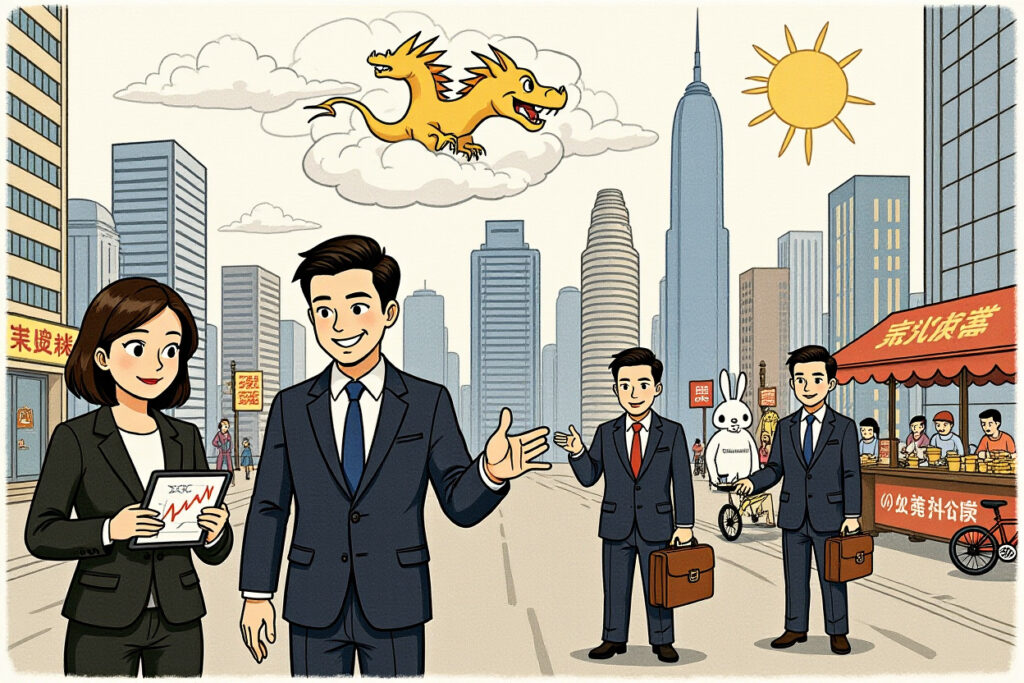China’s solar industry stands at a critical juncture as six government ministries unite to address destructive competition practices threatening the sector’s sustainability. The recent high-level meeting signals Beijing’s determination to transform the world’s largest solar manufacturing ecosystem from a volume-driven market to a quality-focused industry. This coordinated regulatory push against anti-cutthroat competition practices represents a fundamental shift in how China manages its renewable energy dominance.
Multi-Ministry Coordination Against Industry Malpractices
The unprecedented gathering of six powerful ministries demonstrates the seriousness of China’s commitment to solar industry reform. The Ministry of Industry and Information Technology (MIIT) led the coordination with Central Social Work Department, National Development and Reform Commission (NDRC), State-owned Assets Supervision and Administration Commission (SASAC), State Administration for Market Regulation (SAMR), and National Energy Administration (NEA).
Comprehensive Regulatory Approach
This multi-agency approach ensures all aspects of anti-cutthroat competition are addressed simultaneously. MIIT focuses on manufacturing standards, NDRC on investment policies, SASAC on state-owned enterprise compliance, SAMR on market regulation, and NEA on energy sector integration. The coordinated effort prevents regulatory gaps that previously allowed problematic practices to continue.
Industry-Wide Participation
Manufacturers, power generation companies, industry associations, and local regulatory bodies participated in the discussions. The inclusion of both upstream manufacturers and downstream users ensures balanced perspectives in developing anti-cutthroat competition measures that benefit the entire value chain.
Key Regulatory Measures Against Destructive Practices
The meeting outlined four pillars of intervention designed to eliminate anti-cutthroat competition while promoting sustainable growth. These measures address the root causes of price wars and quality deterioration that have plagued the industry.
Enhanced Investment Management
Regulators will strengthen control over solar project investments using market-based and legal mechanisms to phase out obsolete capacity. This prevents overinvestment in low-tier manufacturing that typically engages in anti-cutthroat competition through dumping strategies. The government will establish clear criteria for technological standards and production efficiency that must be met for new investments.
Price Monitoring and Regulation
A comprehensive price monitoring system will track manufacturing costs and market prices across the supply chain. The mechanism will identify and penalize companies selling below cost—a primary anti-cutthroat competition tactic. SAMR will enhance enforcement against false marketing claims and predatory pricing strategies that distort fair competition.
Quality Standard Enforcement
Regulators will combat quality degradation practices including false power rating claims, reduced quality control spending, and intellectual property violations. These practices have become common anti-cutthroat competition tools as manufacturers cut corners to offer unrealistically low prices. Strict certification requirements and random inspections will ensure compliance with published specifications.
Industry Self-Regulation Enhancement
The China Photovoltaic Industry Association will play a stronger role in promoting fair competition norms and technological innovation. Industry-led initiatives will complement government regulations in creating an environment where anti-cutthroat competition becomes economically unviable and socially unacceptable.
Market Impact and Price Stabilization
Early signs suggest the anti-cutthroat campaign is already influencing market behavior. Recent bidding results show notable price improvements compared to the destructive lows seen in previous months.
Huarun Power Bidding Results
The August 18th tender for 3GW of N-type TOPcon bifacial modules saw all bids exceeding 0.70 yuan/W, with averages reaching 0.729 yuan/W and 0.718 yuan/W across three segments. This represents a significant recovery from prices that had fallen below sustainable levels due to anti-cutthroat competition tactics. Industry analysts confirm leading manufacturers are now adhering to cost-based pricing principles.
Upcoming Major Tenders
China Huadian Corporation’s 20GW procurement tender scheduled for August 22nd will serve as a critical test of whether price stabilization can be maintained. With polysilicon prices rising upstream, this tender will indicate whether manufacturers can pass cost increases downstream without resorting to anti-cutthroat competition strategies.
Industry Response and Implementation Challenges
Market participants have largely welcomed the anti-cutthroat competition measures while acknowledging implementation complexities. The China Photovoltaic Industry Association representative noted increasing regulatory attention to problematic practices that violate anti-unfair competition laws.
Implementation Timeline
While regulations are being rolled out immediately, full implementation will require months of coordinated effort. Local regulators must adapt national guidelines to regional conditions, and companies need time to adjust business practices that previously relied on anti-cutthroat competition approaches.
Compliance Mechanisms
Enforcement will combine mandatory regulations with incentive structures. Companies adhering to quality and pricing standards may receive preferential access to projects, financing, and export licenses. Those engaging in anti-cutthroat competition practices will face restrictions and penalties.
Global Implications of China’s Solar Restructuring
China’s campaign against anti-cutthroat competition has significant implications for global solar markets. As the world’s dominant manufacturing hub, Chinese pricing and quality standards influence solar deployment costs worldwide.
Export Market Effects
International buyers may see moderate price increases but benefit from improved product quality and reliability. The reduction in anti-cutthroat competition practices should lead to more stable supply relationships and predictable pricing for importers.
Technology Development Impact
With reduced pressure from anti-cutthroat competition, manufacturers can redirect resources from cost-cutting to innovation. This could accelerate development of next-generation technologies beyond the current mainstream offerings.
Future Outlook for Solar Industry Development
The successful implementation of anti-cutthroat competition measures could transform China’s solar industry into a more sustainable, innovation-driven sector. However, challenges remain in balancing regulation with market dynamics.
Short-term Adjustments
Industry consolidation appears inevitable as smaller players unable to compete without anti-cutthroat competition tactics exit the market or get acquired. This process may cause temporary disruptions but should strengthen the industry’s long-term foundation.
Long-term Transformation
The ultimate goal is creating an industry structure where competition focuses on technology, efficiency, and reliability rather than destructive price warfare. Successful implementation of anti-cutthroat competition measures could establish China as the global leader in both solar manufacturing quality and innovation.China’s comprehensive approach to eliminating anti-cutthroat competition represents a maturation of the world’s most important solar manufacturing ecosystem. The multi-ministry coordination, detailed implementation framework, and early market response suggest this initiative may successfully transform industry dynamics. Market participants should prepare for a new competitive environment where sustainable practices outweigh short-term pricing tactics. Industry stakeholders must now embrace this transition toward quality-focused competition that benefits manufacturers, customers, and the global renewable energy transition alike.




